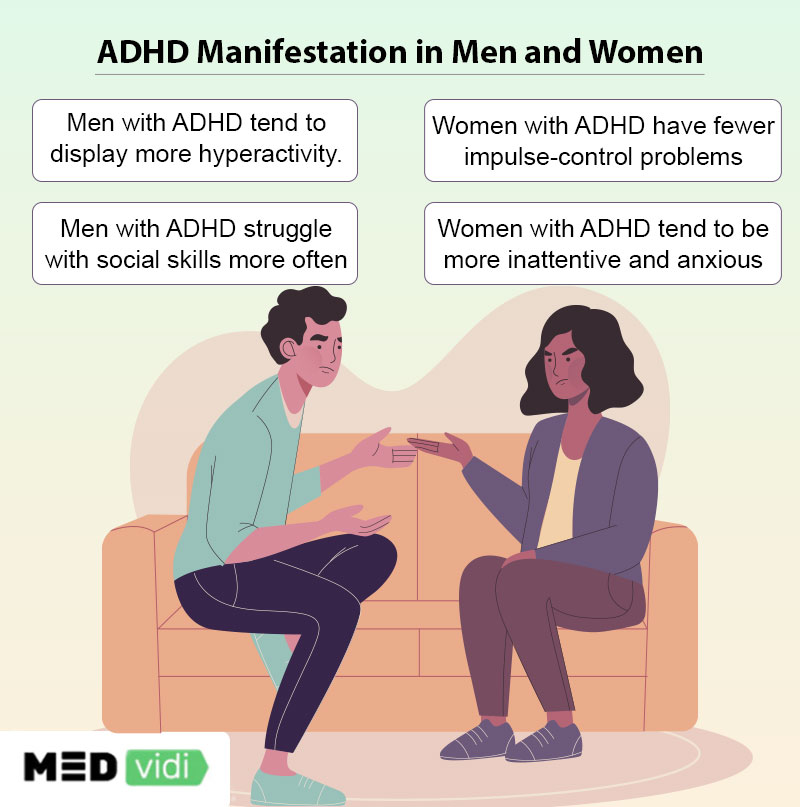Attention deficit hyperactivity disorder (ADHD) is a well-known neurological disorder that affects an individual’s ability to focus and pay attention. It is estimated that
ADHD is thought to be more prevalent in men than women, but research has suggested that gender differences in the disorder may be more complex than previously thought.
How does ADHD manifest differently between the genders? In this article, we’ll explore the latest research on ADHD in men vs women and consider the implications for diagnosis and treatment.
Diagnosing ADHD in Men and Women
According to
ADHD is often seen as a “boys’ disorder,” which may lead to girls being overlooked or misdiagnosed. One of the reasons lies in the stereotyping of hyperactivity as male behavior. Another reason is that symptoms of ADHD in women are often more subtle.
Common Differences in Symptoms
There are some differences in the way the signs of ADHD in women and men are expressed that are important to consider.
- Men with ADHD tend to display more hyperactivity, impulsivity, and aggression than women with the condition. Meanwhile, women may have fewer impulse-control problems.
- When it comes to achievements, men often focus on the rewards of immediate gratification, which frequently leads to reckless behavior. On the other hand, women may be more drawn to persevering and planning to achieve their long-term goals.
- Women with ADHD are rather more inattentive than men. They may have difficulty with tasks such as completing assignments,
remembering details [3*] , and staying on top of their responsibilities. - Women may have difficulty controlling their emotions and may be more prone to mood swings than men.
- Men may display a greater tendency to struggle with social skills, such as forming relationships and making and keeping friends.
- Women may experience more anxiety, depression, and self-doubt than their male counterparts.
Differences in ADHD Treatment
There is evidence to suggest that men and women with ADHD often receive different treatments and support.
The difference in the treatment of ADHD in men and women can be seen in the types of medications used to treat the disorder.
There is
We can see that treatments for ADHD are not tailored to the different experiences that men and women have with the disorder. The effectiveness of gender-specific treatment programs is largely supported by the fact that they create an environment that is more conducive to patient engagement. By grouping individuals of the same gender in therapy and treatment settings, patients are often more comfortable and connected to their peers, resulting in a stronger motivation to undergo treatment and recovery.
However,

Conclusion
It is clear that ADHD affects both sexes, but the symptoms vary in both severity and type. It is important to keep in mind that gender alone cannot explain the differences seen in ADHD symptoms, and caution must be used when making gender-based diagnosis and treatment decisions. Ultimately, understanding the subtle gender differences in ADHD can help both men and women better assess their individual needs, leading to more effective diagnoses and treatments.
We need to increase awareness of gender-based differences in the manifestation of this disorder. It is necessary to invest in research that can determine the specificities of ADHD in each gender. Hopefully, science will uncover the unique ways in which men and women experience this disorder to create more individualized approaches to treatment.
If you are looking for expert aid in managing ADHD, the online mental health center MEDvidi is the right place. Qualified healthcare providers from your state will guide you through it and devise a personalized treatment plan to suit your needs. Often this will include psychotherapy and medications.













